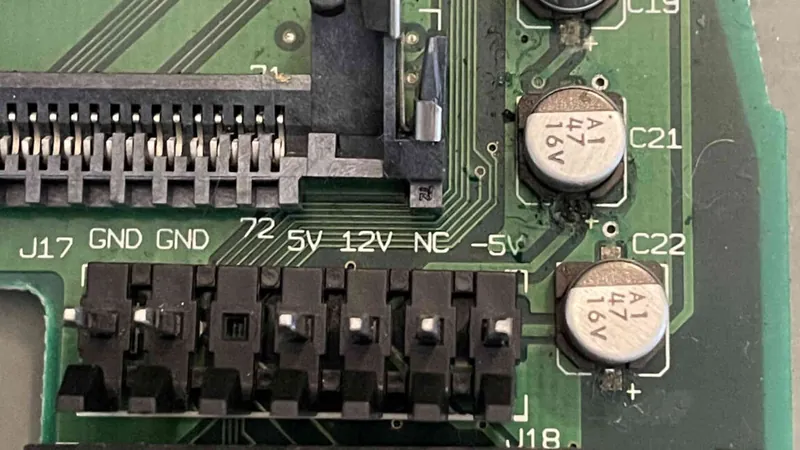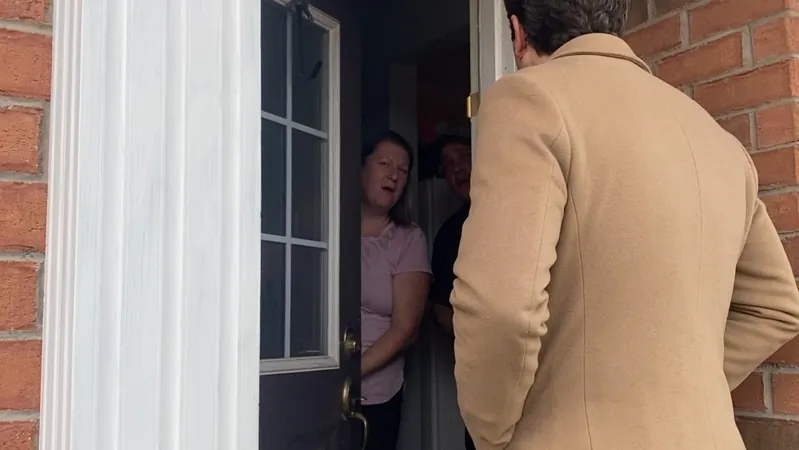
Shocking Discovery: Backward Capacitor Issue in Mid-'90s Macs Revealed!
2024-11-29
Author: Emily
Shocking Discovery: Backward Capacitor Issue in Mid-'90s Macs Revealed!
In an unexpected twist for vintage tech enthusiasts, a long-standing misconception regarding the design of the mid-'90s Apple Mac LC III has resurfaced, prompting renewed discussions among hobbyists and retro computing fans. User paul.gaastra, active on the 68kMLA vintage Mac forum, has brought to light a critical design flaw: one of the capacitors on the LC III was installed incorrectly due to a silkscreen printing error.
Apple's "pizza box" Macs, produced between 1993 and 1996, were not subjected to a factory recall despite this issue. Models like the LC III, LC III+, and Performa variants (450, 460, 466, and 467) were sold with a standard 90-day warranty, leading many to believe they functioned correctly. However, the problem usually arises during repairs, particularly during the process known as "re-capping," where hobbyists replace aging capacitors.
Doug Brown, a participant in the original discussions from 2013, revisited the issue after acquiring a Performa 450 still equipped with its original capacitors. In a blog post on the Adafruit site, he expertly dissected the board layout, confirming suspicions that Apple had indeed placed the positive and negative connections incorrectly. Specifically, one of the capacitors in the corner of the LC III board, labeled C22, was mishandled. Unlike its companions, C19 and C21, which were correctly connected to the +5V and +12V lines, C22 was hooked up to a -5V rail, making it vulnerable to reverse voltage—a condition it was never designed to withstand.
Notably, earlier models, such as the LC and LC II, had their connections correct, as did the LC 475, which adopted the same power scheme. Brown's assessment suggests a straightforward oversight on Apple's part, akin to a coding error, where a simple slip led to significant implications.
The Mystery of Overlooked Faults
So, how did this slip slip through the cracks for so long? A couple of reasons arise. For starters, the -5V rail was primarily used for serial ports and select expansion cards, meaning that a capacitor failure might have gone unnoticed. Additionally, the original capacitor was rated for 16V, which meant that it could potentially endure the -5V without immediate issues—at least for a time.
The questions linger: Did Apple know about this flaw? Was there a conscious decision to avoid remedying what may have seemed like a low-priority flaw? As people reminisce about their Apple days, some onlookers have even reached out to former employees for insight.
By sharing his findings, Brown aims to prevent future restorers from making the same mistake and encourages them to disregard Apple’s incorrect markings when placing C22. Observations from fellow hobbyists indicate that incorrect installations could lead to catastrophic failures, with some replacements going off with a bang.
Instead of conventional fluid-filled capacitors, many modern restorer specialists now favor tantalum capacitors, which, while more reliable, can react adversely to reverse voltage, intensifying the stakes during restorations.
Finally, if C22 or any faulty capacitors result in extensive damage, resourceful members of the 68kMLA community, such as max1zzz, have created reverse-engineered logic board schematics widely available for enthusiasts attempting repairs.
As the story unfolds, the vintage tech community continues to examine how this revelation will influence the restoration process for the beloved classic Macs. Stay tuned for more updates!









 Brasil (PT)
Brasil (PT)
 Canada (EN)
Canada (EN)
 Chile (ES)
Chile (ES)
 España (ES)
España (ES)
 France (FR)
France (FR)
 Hong Kong (EN)
Hong Kong (EN)
 Italia (IT)
Italia (IT)
 日本 (JA)
日本 (JA)
 Magyarország (HU)
Magyarország (HU)
 Norge (NO)
Norge (NO)
 Polska (PL)
Polska (PL)
 Schweiz (DE)
Schweiz (DE)
 Singapore (EN)
Singapore (EN)
 Sverige (SV)
Sverige (SV)
 Suomi (FI)
Suomi (FI)
 Türkiye (TR)
Türkiye (TR)